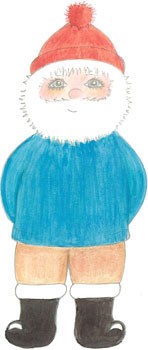
Salty Sam’s Fun Blog for Children
Number 386
Elephants
Hello Everyone

Can l ask you a question?
How do you know when there is an elephant under your bed?
Well, when you get out of bed in the morning, you hit your head on the ceiling.![]()
Well, supposing you have never had a real elephant in your bedroom, you may have seen one in a zoo or in a safari park, so you will know how big they can be.
There was a famous elephant in London Zoo many years ago called Jumbo and he used to give people rides.
Did you know that apparently elephants think that humans are really cute – to them we are just like little puppies?
(No, l don’t know how anyone can know what an elephant is thinking either.)
Nowadays, if you want to sit on an elephant, you will probably need to go to somewhere like Sri Lanka and go on an elephant safari.
l think that Jumbo was probably the most famous elephant ever.
He was born at the end of 1860 in Sudan in North Africa. He was captured by elephant hunters after they had killed his mother. He was sold to an ltalian animal dealer and eventually ended up in a zoo in Paris.
ln 1865, he was transferred to London Zoo.
There he broke both tusks, and when they re-grew he kept grinding them down on the wall of his enclosure.
l don’t think he was very happy, do you?
Despite an outcry of public disapproval, he was then sold to P.T. Barnum who took him to the United States to be put on exhibition in his circus.
Jumbo made a lot of money for the circus but was sadly killed when a train hit him in 1885. He was crossing the track on his way back to his carriage in the train that transported the circus all over the country. He had just finished what was to be his last evening performance.
His name is now used to talk about anything that is big, like a jumbo packet of peanuts or a jumbo jet.
Most elephants, of course, live in the wild.
The ancestors of the elephants are known to have lived 50 million years ago in North Africa, but they were only the size of a pig. Their closest living relatives today are sea cows. lf you look at the face of a manatee (or sea cows), you can really see a resemblance.
During the lce Age, there were about 7 species of elephants, including mammoths, which you have probably seen pictures of. But today, there are only 3 species. They are the tall savannah elephant, the slightly shorter rainforest elephant that both live in Africa, and the Asian elephant.
African elephants have larger ears and backs with dips in them, while Asian elephants have smaller ears and humped or level backs.
Elephants are by far, the biggest land mammal. But scientists believe that because of the structure of their lungs, at one time, millions of years ago, elephants were undersea animals.
Sadly, elephant numbers are now under threat, and poaching is a problem that authorities are constantly trying to tackle. Habitat loss and maybe global warming too are also problems.
The word elephant comes from the Greek word ‘elephas’ which means ivory. Of course, elephant tusks are taken to be used to make ivory items.
The tusks of the elephant are enormous teeth. They keep growing throughout an elephant’s life and an adult male’s teeth have been found to grow about 18cm a year. They are used to help the elephant get food from the ground or from trees. They are used to mark trees to establish an elephant’s territory and very occasionally also for fighting.
Some male Asian elephants have tusks; the females don’t have them at all. The African males have bigger tusks than the African females do. Animals that have them seem to be right-tusked or left-tusked like humans are right or left-handed – meaning that they tend to favour using the same tusk when doing something like collecting roots or bark.
An elephant’s trunk is its nose and upper lip joined together. The trunk has no bones but lots of muscles which help it move round in every direction and it is both strong and sensitive. lt can sniff and investigate objects and suck up many litres of water to be blown into the elephant’s mouth.
lt can also blow mud onto an elephant’s back. This mud will protect its skin from insect bites and will also act as a sunscreen.
Elephants can use their trunk as a snorkel when they are swimming or lying underwater, and they can raise it up in greeting.
And at the tip of the trunk there is one finger-like structure (Asian) or two (African), depending on the type of elephant; that can pick up tiny objects.
A trunk is very useful to an elephant.
Elephants have the keenest sense of smell of any mammal.
When a baby is born, its trunk does not have much muscle tone, and when it runs around, its trunk flaps around. l expect you have noticed. lt takes several months for the calf to gain full control of its trunk.
Baby elephants will suck their trunks like little humans will sometimes suck their thumb.
Elephants also have enormous ears. You often see them flapping their ears. This movement helps to cool an elephant down because the ears have a lot of surface area and any blood just under the skin will be cooled down in the fanning process.
The folds in an elephant’s skin help its body to regulate its temperature. The wrinkled skin holds more moisture and loses more heat than smooth skin. This is important to an animal with a big body in a hot climate.
Elephants can hear each other trumpeting up to five miles away. They have good hearing – and they have loud voices that travel well.
Elephants can walk and run. They have soft pads under their feet and so don’t make noise when they walk.
lf a herd tramples through a village, vegetable patch or forest though, it can cause a lot of damage.
Elephants eat a lot as well, and can strip an enormous amount of bark and vegetation out of a forest as they walk through it. Forest elephants like to eat fruit too.
Elephants need to find water to drink every day, and each evening they like to take a bath in a lake or river.
Elephants live for about 50 to 70 years and the oldest known elephant lived for 86 years.
Males are called bulls and females are called cows. A baby is called a calf.
Elephants live in social groups made of families. The females stay together and all take a part in looking after the babies of the herd – which are really cute. There are usually babies of different sizes in a herd, if it is quite large, because a new baby is not born very often; and twins are rare.
The eldest female is usually the leader of the group. She is called the matriarch.
She makes decisions on behalf of the herd, like where they are likely to find water during dry periods.
Adult males tend to live their own lives in their own herds or even totally on their own. These herds wander around meeting up with different female groups. Baby boys leave the female herds to join the male herds when they are grown up.
A herd can be made of a few individuals or can be many hundreds of individuals.
Every member of the herd knows everyone else and they form deep family bonds. Elephants have really good memories and remember humans and other elephants even after many years of separation.
They remember if the human was nice to them or nasty to them too!
Elephants have the largest brain of any land mammal and are as intelligent as a chimpanzee. They understand basic arithmetic and love to have music played to them.
Elephants stay together for many years and are animals that seem to mourn their dead. They perform burial rituals and return to visit grave sites of their dearly departed.
They can get very upset and distressed when something bad happens.
Baby elephants suffer terribly when they lose their mothers and some kind people set up elephant orphanages to care for them. They give them affection and play football with them to try and cheer them up.
Some of them become quite naughty when they are older because they have not been taught right from wrong by the elders of the herd.
lf they are put into a herd, they settle down.
Elephants are rarely kept for exhibition now, in the way that Jumbo was; you will be pleased to know.
lf you like my blog, please support it by telling all your friends and followers about it.
Thank you!
And see you again next Fun Friday!
Love and kisses
Salty Sam

www.christina-sinclair.com


Bill and Bob’s Joke of the Week![]()
![]()
Bill: How do you get down off an elephant?
Bob: You don’t! You get down off a duck.

Salty Sam © Christina Sinclair 2015
Unauthorized use and/or duplication of material from this blog without express and written permission from this blog’s author and owner is strictly prohibited.
Links may be used to www.christina-sinclair.com

Picture Gallery
Mammoth
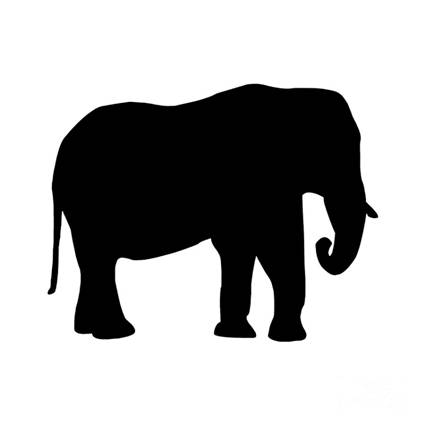 African elephant shape
African elephant shape
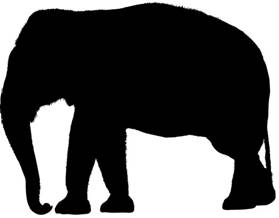 Indian elephant shape
Indian elephant shape
 African elephants with large tusks and large ears
African elephants with large tusks and large ears
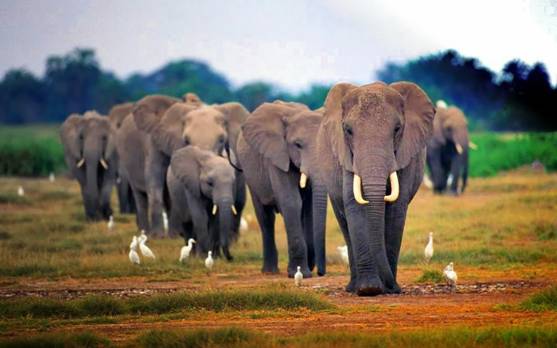 A herd on the move
A herd on the move
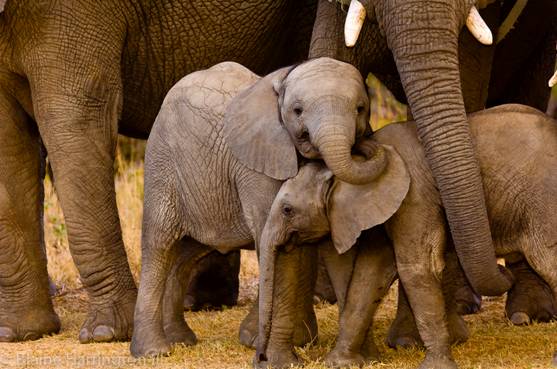 Looking after the babies
Looking after the babies
 A baby
A baby
 A statue in Park Lane in London
A statue in Park Lane in London
 The flexibility of the trunk
The flexibility of the trunk


 THE SALTY SAM NEWS DESK
THE SALTY SAM NEWS DESK

Last week, the children were in Auntie Alice’s garden picking strawberries. The best ones were going to be rushed down to the Rocky Bay Tea Rooms to be served to the tourists. The wonky and misshapen ones were going to be taken into the kitchen to be made into jam.
Of course, a lot disappeared into the children between the strawberry patch and the kitchen, but we knew that was going to happen!
Auntie Alice said that now she had some payment from her customers, she was able to pass on some money to the children.
They really had done some sterling work!
(That means excellent and valuable work that really helped her out.)
Bill and Bob asked if they were going to get enough coins to completely fill up their piggy banks.
Auntie Alice said that she was not going to give them any coins.
Bill and Bob felt very disappointed at first.
Auntie Alice said that she was going to give them some bank notes instead.
She told them that it does take longer to fill your piggy bank up with notes than coins.
But actually, it is better to keep your money in a savings account than a piggy bank because you get interest on it in there.
That won’t ever happen in a piggy bank.
The banks and building societies that offer savings accounts to children really do prefer to receive money in the form of notes rather than coins.
If they were going to be part of Auntie Alice’s business enterprise, they would have to start thinking bigger!
The boys agreed. Emily said that she didn’t have a savings account so Auntie Alice said she would let her mum sort that out for her.
Auntie Alice put the children’s money in some envelopes for them to carry it home in.
Bill and Bob were pleased to see how their bank notes fitted through the slot at the top of their piggies and sat inside quite happily.
They will transfer the money into their building society accounts next week.
They can get the money out of a plugged hole in the piggies’ tummies. Bill and Bob call these holes ‘escape hatches’.
Now they want to do some more work and so they can earn some more cash!


*********************
TO ADVERTISE ON THIS BLOG
PLEASE CONTACT:
christina.sinclair.ads@aol.co.uk
*********************

 Quick Quiz
Quick Quiz
Can you work out what these types of grey are?
- s _ _ _ e
- c _ _ _ _ _ _ l
- s _ _ _ e
- c _ _ _ _ _ _ e
- s _ _ _ m c _ _ _ d
- w _ _ _ _ s
- p _ _ _ _ _ _ m
- p _ _ _ _ r
- a _ h
- e _ _ _ _ _ _ t
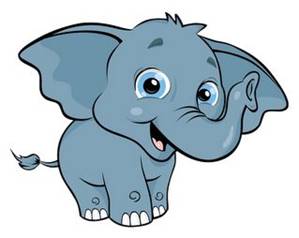



lt’s the Weekend!

HOW TO MAKE A LlTTLE KNlTTED ELEPHANT
If you love elephants, you will love this little fellow.
He has to be the easiest-to-knit elephant ever.![]()
You can make him in blue like the photograph or grey if you prefer.
You could make him in pink and give him grey eyes or grey and give him pink eyes.
He would look nice white as well.
If you ever make anything for a baby, do not leave anything loose on the toy that can become a choking hazard.
ELEPHANT BODY (KNIT TWO)
Using 4mm knitting needles and light blue dk yarn cast on 18 stitches
Knit 40 rows of stocking stitch
Don’t cast off
Cut off the yarn leaving a length of yarn of about 20cm to leave your stitches on
ARMS (KNIT TWO)
Using 4mm knitting needles and light blue dk yarn cast on 14 stitches
Knit 2 rows of garter stitch
Knit 12 rows of stocking stitch
Cast off
PAWS (KNIT TWO)
Using 4mm knitting needles and light blue dk yarn cast on 14 stitches
Cast off
Curl knitting into a disc and sew across it several times to make it solid
LEGS (KNIT TWO)
Using 4mm knitting needles and light blue dk yarn cast on 16 stitches
Knit 2 rows of garter stitch
Knit 12 rows of stocking stitch
Cast off
PAWS (KNIT TWO)
Using 4mm knitting needles and light blue dk yarn cast on 20 stitches
Cast off
Curl knitting into a disc and sew across it several times to make it solid
TRUNK (KNIT ONE)
Using 4mm knitting needles and light blue dk yarn cast on 14 stitches
Knit 2 rows of garter stitch
Knit 8 rows of stocking stitch
Cast off
TRUNK SNOUT (KNIT ONE)
Using 4mm knitting needles and light blue dk yarn cast on 10 stitches
Cast off
Curl knitting into a disc and sew across it several times to make it solid
Using a dark blue yarn make 2 nostrils by sewing 2 French knots onto the surface of the disc – wrap the yarn twice around your needle
EARS (KNIT TWO)
Using 4mm knitting needles and light blue dk yarn cast on 12 stitches
Knit 14 rows of garter stitch
Don’t cast off
Cut off the yarn leaving a length of yarn about 20cm long to leave your stitches on
Pull in the top of the ear to make a round top, secure the yarn so that the top can’t undo, and then take this yarn down the side of the ear
TAIL (MAKE ONE)
Crochet 10 chains into a length of light blue yarn

TO MAKE UP
- Sew up the side seams of the trunk, arms and legs using over-sew stitching and right sides together
- Turn right way out
- Insert the discs into the ends and sew into place
- Stuff lightly
- Sew up the sides of the body using over-sew stitching with right sides together
- Turn right way out
- Sew the legs and arms in place
- Stuff the body and head
- Pull in the top of the head and secure and neaten the ends of the yarn
- Secure the end of a length of yarn into the back of the neck using a yarn needle then wrap the yarn tightly around the neck pulling it in as far as you can, wrap the yarn around the neck twice more and secure the yarn
- Add eyes
- Sew the base of each ear along the side seam
- Sew the trunk in place
- Sew the tail to the base of the spine



Please note that the material on this blog is for personal use and for use in classrooms only.
It is a copyright infringement and, therefore, illegal under international law to sell items made with these patterns.
Use of the toys and projects is at your own risk.
©Christina Sinclair Designs 2015


Quick Quiz Answers
- stone
- charcoal
- slate
- concrete
- storm cloud
- walrus
- platinum
- pewter
- ash
- elephant

More greys
 Baby elephants love to play
Baby elephants love to play
This elephant needs to learn to look both ways before he crosses the road!

Embroidery Stitches



